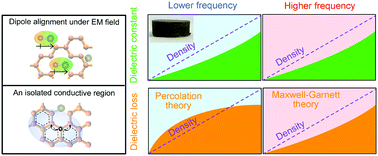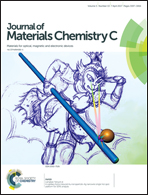Graphene oxide foams: the simplest carbon-air prototypes for unique variable dielectrics†
Abstract
Since dielectric materials are highly attractive in the emerging industry due to their significant applications in energy storage, power electronics, medical devices, etc., the pursuit of novel dielectric materials with fantastic properties is one of the most active areas of research. Based on their porous structures and chemical components, herein, we report three-dimensional (3D) graphene oxide foams (GOFs) as novel lightweight compressible dielectric materials, which are considered as the simplest carbon-air prototypes for variable dielectrics. With the increasing compression, much enhanced dielectric properties along with enlarged densities were found, and the exclusive mechanisms based on the dipole alignment and isolated conductive regions in the 3D GO–air configurations were considered as the major factors contributing to their dielectric properties. For understanding this interesting dielectric variation in 3D GOFs, a general model was proposed to explain the density-dependent dielectric constant; moreover, the percolation theory and Maxwell-Garnett theory were used to explain the variations in the dielectric loss at lower and higher frequency, respectively. According to the experimental and theoretical results, implication of the decoupled dielectric properties suggests that utilization of 3D GOFs highlights an exceptional platform for the fabrication of unique dielectric materials with various properties.



 Please wait while we load your content...
Please wait while we load your content...